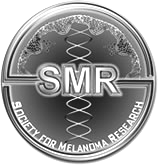10 Skin Cancer Myths
You don't get sunburned on cool or cloudy days
False: UV radiation that causes sunburn can be just as high on cool or cloudy days as it is on sunny ones. You can't see or feel UV radiation so check the SunSmart UV Alert every day and protect your skin when UV levels are 3 or above. The SunSmart UV Alert is available in the weather section of most daily newspapers or radio
You don't need to use sunscreen because your foundation/moisturiser has sunscreen in it
False: Foundations and moisturisers with sunscreen are fine if you are outside for short periods in the morning only. So for longer periods outside or for the rest of the day, use a separate sunscreen and reapply every 2 hours - not just once in the morning.
People with olive skin are not at risk of skin cancer
False: Everyone is at risk of developing skin cancer. People with dark skin or those who tan easily have a lower risk than those with fair skin, but they are still at risk of skin damage and skin cancer. In our experience people with fair skin who tan have the highest incidence of skin cancer as they feel there is an incentive/capacity to tan but their skin cannot handle UV damage and skin cancer can result in direct proportion to the UV they have been exposed to.
Sunbeds (solariums) are a safe way to tan
False: Sunbeds emit UV radiation that can be much stronger than the midday sun. Using a sunbed can significantly increase your risk of melanoma and other skin cancers. There is no safe way to tan. Sunbeds are in general banned from use in Australia.
You need to spend lots of time in the sun to get enough vitamin D
False: UV levels in NSW are high so most people get enough vitamin D through normal daily activity - even with sun protection. 10 minutes in the sun on most days of the week in summer, 15-20 minutes in spring and autumn, and 30 minutes in winter, outside peak UV times (10am-2pm or llam-3pm daylight saving time), should give you enough vitamin D.
Fake tan protects your skin from the sun
False: Fake tan colours your skin on the surface. While some fake tan products contain sunscreen, the protection lasts only a few hours. You still need to use sun protection.
You don't have to be concerned about skin cancer because, if it happens, it's easy to see and easy to treat
False: Finding and treating skin cancer isn't always easy and every year more than 2,000 Australians die from it. Many people need extensive surgery which can result in permanent scarring. Some skin cancers can also spread to other parts of your body. Check your skin regularly and consult your GP immediately if you notice any changes. Prevention is always better than cure.
Only people who sunbathe get skin cancer
False: Sunbathing is a high-risk activity for skin cancer, as tanning is a response to sunburn. You are also exposed to UV radiation while walking the dog, gardening or just being outside. In fact, most sunburn occurs when people are not deliberately seeking a tan.
If your skin tans but doesn't burn, you don't need to bother with sun protection
False: A suntan is the result of sun damage, even if there is no redness or peeling. Your skin turns brown because UV rays have damaged the cells below. The same damage results in skin cancer, you cannot have one without the other. Even if you tan easily, you are still at risk of skin cancer and need to use sun protection.
You can't get burnt through a car window
False: Glass significantly reduces but does not completely block UV radiation, so you can still get sunburned in the car or through a window. So it's important to keep your car windows closed at all times while driving while UV is high and consider other forms of protection like barrier clothing and even sunscreen.










